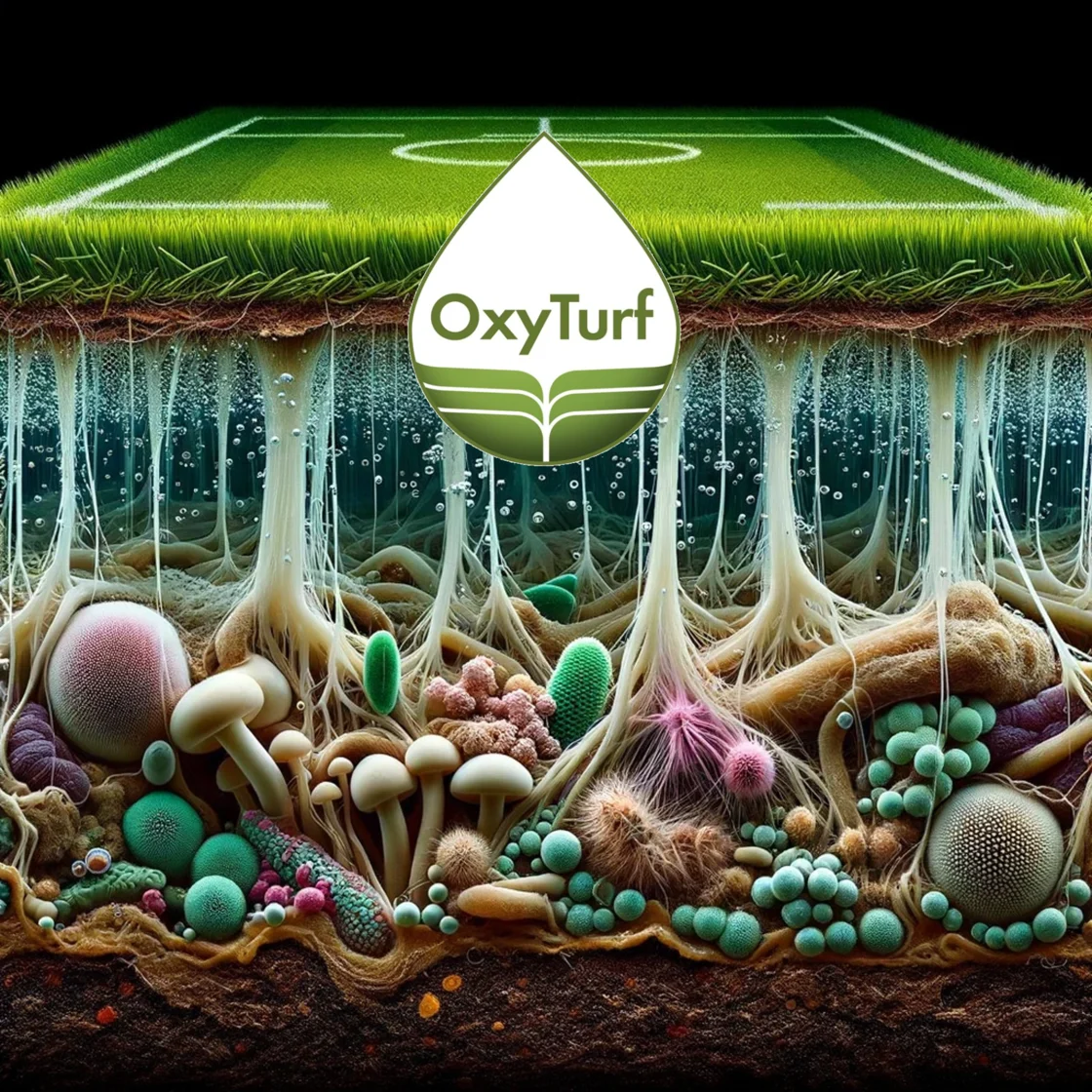No More Ho-Ho-Holding Water:
Keep Courses Playable This Holiday Season.
As we’ve visited golf courses and sports pitches over the past few weeks, we’ve noticed many grounds are facing serious groundwater issues and waterlogging. This is leading to damaged playing surfaces at best, and pitch closures at worst. With the heavy rainfall over the weekend, it looks like the problem is snowballing (sorry!) and likely to spread faster than festive cheer.
We can blame the extreme weather, or even point to climate change or the new 100 acre housing development next door. But the truth is, ground conditions themselves play a big role in how your turf manages these inundations.
Soil compaction from foot traffic and machinery, along with the overuse of chemicals and synthetic fertilisers applied to turf, can disrupt the soil’s natural biology. This is a problem because healthy soil biology is key to improving water movement, helping standing water drain, and speeding up recovery after flooding. When the soil’s in good shape, water can infiltrate more easily, and the roots have the space they need to grow and access nutrients—leading to faster recovery and stronger, more resilient turf.
Improving soil health can make a real difference. By enhancing aerobic conditions and boosting microbial activity in the soil and root zone, you can improve percolation, reduce compaction, and help your turf bounce back faster.
A recent STRI trial demonstrated that OxyTurf is particularly effective at maintaining water infiltration rates, even under high compaction. This could be the solution your grounds need to improve water management and turf resilience.
Read more about the trial results and how OxyTurf can help.

OxyTurf
Contains Aloe Gel with microbial activation.
This advanced solution optimises soil structure, water percolation, and microbial activity, leveraging oxygen release to revitalise and enrich oil and turf health and performance.